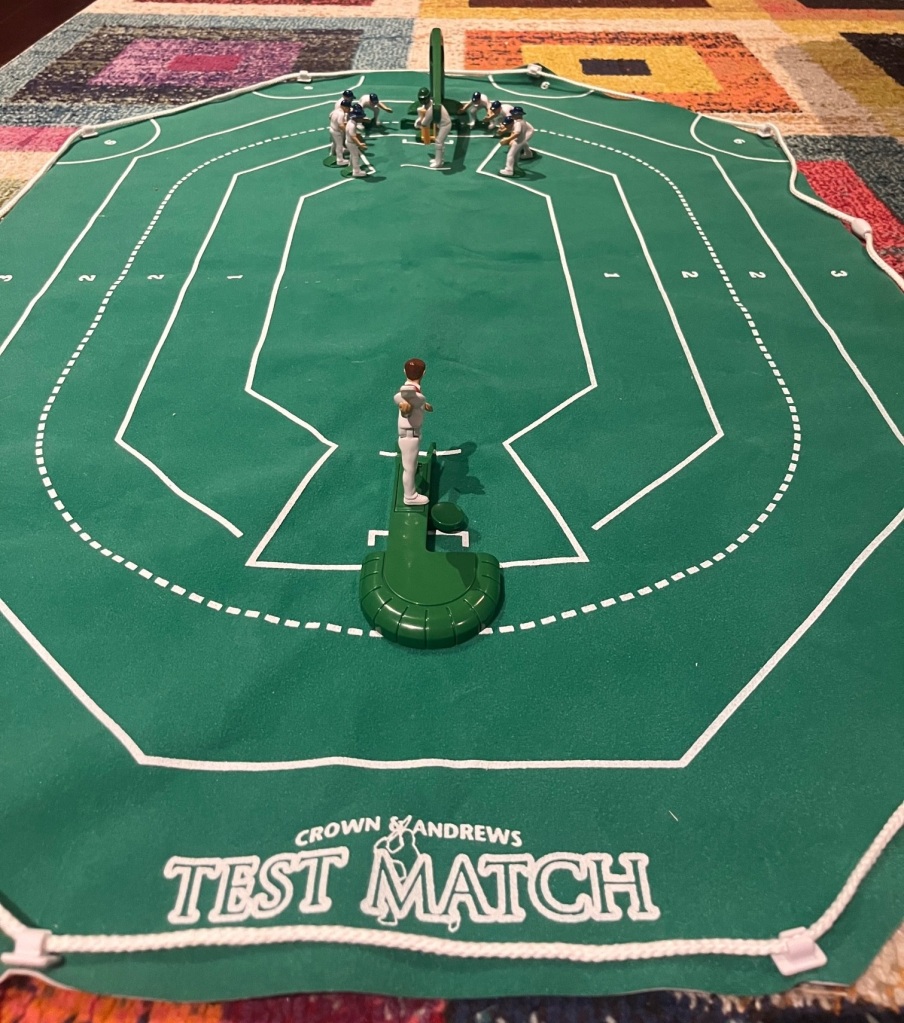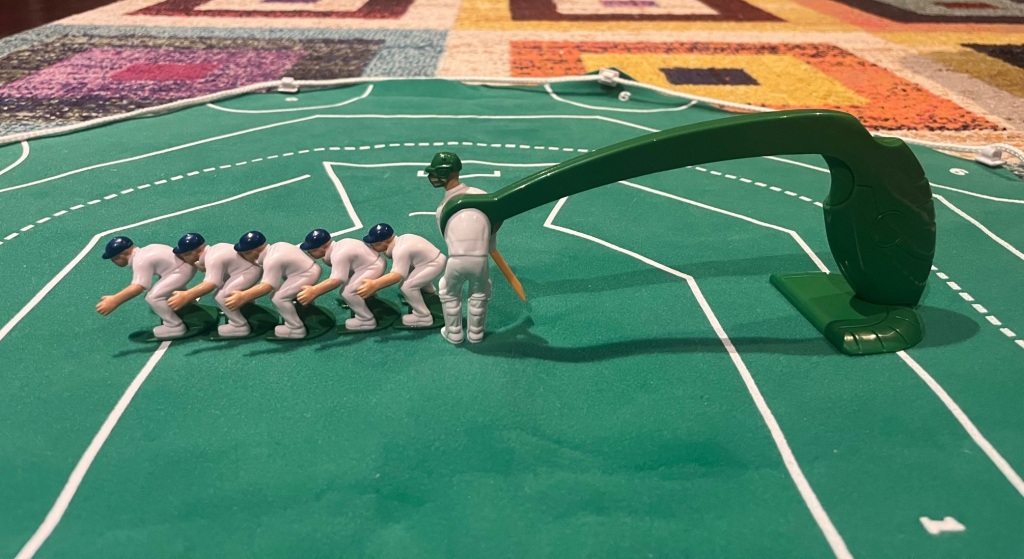Although they share some of the same esoteric idiosyncrasies – monotony, inane tradition, confusing timeframes – I am not talking about real-life Test Match cricket, the pseudo-sport played by slightly out of shape men and women, walking back and forth and back again without purpose for hours and days at a time, I am talking about the boardgame of the same name; ‘Test Match’ – The Authentic All Action Cricket Game! invented by Crown & Andrews in 1977 and a summer mainstay of beach houses, caravans and rumpus rooms in Australia for over 40 years.
If you grew up in Australia it’s pretty likely you had a copy on your shelf, or your cousin did, or your dad’s mate whom you visited on Boxing Day for some reason. It holds a nostalgic association with summer time, and sandy feet, and long hot evenings, and water slides and left over ham in a pillow case.
But unfortunately, like many things that live and glow in that nostalgic little corner of our brains, like the coloured nose on a Bubble O’ Bill… it’s just a bit shit.
Essentially, you roll out this mini cricket oval made of green felt, about the size of a small coffee table then arrange little plastic fielders around it. There is a batter attached to a long plastic arm and an elbowless bowler, spring-loaded at his waist who hurls beamers or grubbers, but nothing in between.
This is a quote from the official rule book: “When you first take the playing pitch out of the box it will have some creasing from where it has been folded. If you lay the pitch on a flat table, smooth it out and leave if for a while, the pitch will flatten out. You can also give it a gentle iron.”
That is a lie.
30 years after you first unboxed this game the green felt will continue to undulate dramatically; hillocks, ravines, impenetrable chasms. If you try to pull one section flat another will bend and twist upwards. And if you ever try to iron that flammable green felt, even ‘gently’, it will catch on fire immediately. No, a lumpy, completely unpredictable playing surface is a timeless and unavoidable element of this game.
The rules boast that the game can be played by 2-24 players. By this they presumably mean that one could assemble 21 of one’s best friends or cousins and form two teams of 11. Each person would presumably then sit patiently, watching the riveting action unfold, while waiting for their turn to bat or bowl. The rules even suggest the poor suckers who arrive number 23 and 24 could fill the coveted roles of umpire and square leg umpire. Taken together, these are the worst ideas any boardgame manufacturer has ever had.
Crown & Andrews also obliquely claims that one can ‘PLAY ALL FORMS OF THE GAME’. It’s not completely clear what is meant by that half-sentence, but notably the manufacturers remain silent on the far more salient question – which is should one play any form of the game. The answer to that question is obviously no, which every person who has ever played Test Match Cricket discovers in about 8 minutes.
And so the game begins, with much misplaced excitement and hope.
This is how the field generally looks in preparation for the first over.
Sensible field, offering good support to the bowler but not overly aggressive – designed to entice stroke-making.
Now, deliveries don’t take long to bowl in Test Match Cricket so it takes a little more than an over to make a drastic fielding change, but never any more than three. It takes about 18 deliveries to realise it is extremely difficult for the batter to get the ball in front of square, and completely impossible unless they are prepared to bravely meet a full toss with their face.
In the 40 year history of this game being played, a batter has successfully struck a drive off the bat in front of square on exactly fifty-nine occasions. Of those fifty-nine, the ball has been directed into that tiny little catching pouch between the fielder’s legs seven times. On each of those seven serendipitous occasions the miniscule force of that tiny little red ball has immediately flung the fielder to the ground, and the ball has then rolled gently for two. I am quite confident in my assertion that nobody in the history of Test Match cricket has ever been caught out in front of square.
So, this is what the field looks like after three overs.
A few catches are taken by those crouching down guys over the next three overs, but most deliveries go for 4 leg byes. And boredom is setting in.
This is how the field looks after another three overs.
This setup probably only lasts another 4 or 5 deliveries, and by now the scorecard looks like this.
3/134 after 9.5 overs. Ten runs taken off the bat. 124 total sundries including a whopping 76 combined byes and leg byes.
There is only one more step here before the game is completely abandoned, and that is to see how many of the crouching down guys can be knocked over in a row by paddling their bums (5 is the most, but 1 is the most fun).
And that’s it, the entire game. Absolute proof that the Crown & Andrews boardgame Test Match Cricket has never been completed in its 40 year history. And perhaps proof that games don’t really need an objective or purpose, much like the real life ‘sport’ from which this game drew its inspiration.

An abandoned pitch is a fine place for a lucky cat to groom herself.





